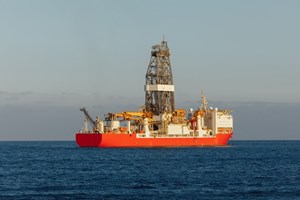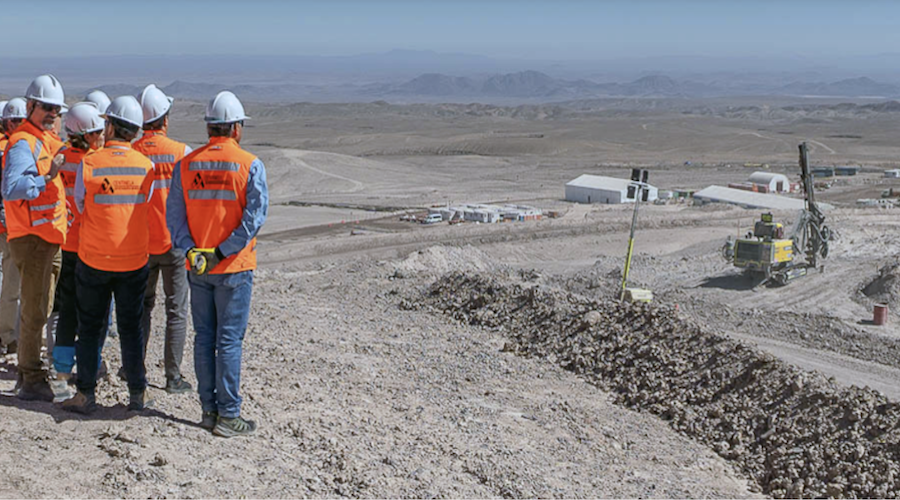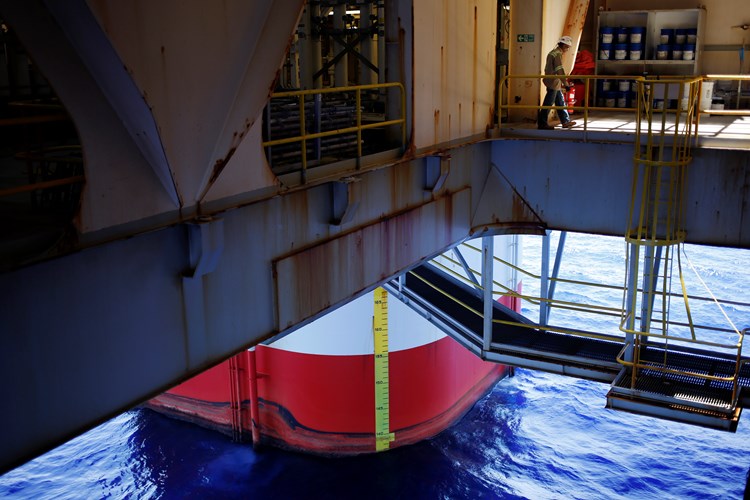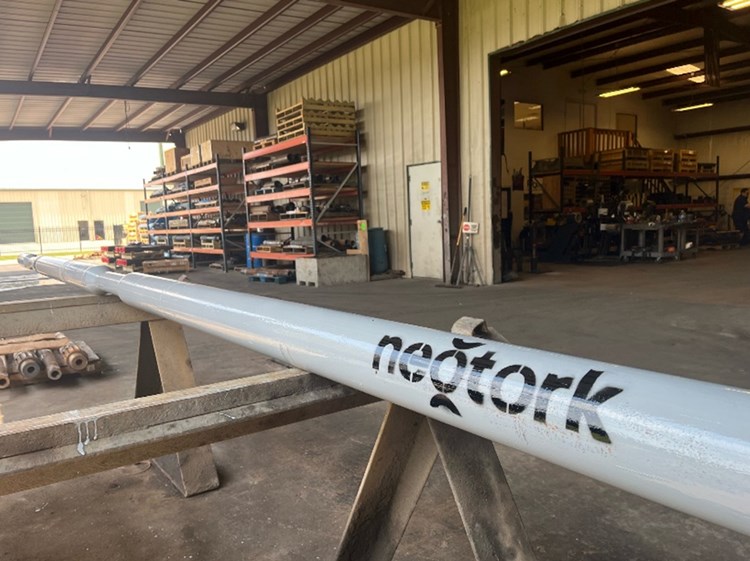
A number of drilling problems begin downhole at the drill bit. As a formation is drilled, the bit-rock interaction is a source of vibrations in the drill string.
There are four key types of vibrations that can be created from this interaction that cause drilling dysfunction: axial, lateral, and torsional or radial vibrations. The latter are separated into stick-slip at low frequencies and High Frequency Torsional Oscillation (HFTO) at higher frequencies. All four of these vibration types can be dysfunctional in the drilling operation and need to be managed effectively to achieve efficient drilling with the highest ROP possible.
STOPPING ISSUES AT THE BIT
Over the last several years, drilling vibration suppression systems (VSS) have been introduced to the market to minimize different types of downhole vibration. The intention of a VSS tool, combined with a rotary steerable BHA, is to dampen the form of vibration that the specific VSS was designed to mitigate. This should allow the drill string to perform more optimally and drill a better, faster well. While the VSS introduction to a BHA sounds great in theory, not all VSS tools on the market can eliminate every type of vibration that can be encountered downhole.
Axial shocks start at the end of the drill bit and send vibrations directly through the drill bit and up the drill string through the BHA. One potential cause of axial shocks is drilling through non-homogenous or layered downhole lithologies and hitting rocks of different hardness. An axial shock to a drill string with great enough force can, at a minimum, decrease ROP significantly, and at most, it can damage the drill bit and BHA. There are some VSS tools built with springs that act like shock absorbers to dampen axial shocks.
Low-frequency torsional vibration in the drilling process is commonly called stick-slip. Stick-slip occurs when the drill bit depth of cut is too deep relative to the formation it’s trying to drill. The drill bit digs into the formation deeply enough to slow it down, relative to the rest of the uphole drill string, causing reactive torque. The difference in revolutions per minute (RPM) of the drill string on surface and at the bit can be significantly different when stick-slip is occurring. This can cause drill string and BHA fatigue (depending on the amplitude and frequency), as well as slow the ROP significantly, as the drilling parameters must be adjusted downward to cope with the dysfunction. A VSS tool designed with an internal helical spline is typically employed for this type of vibration.
HFTO is torsional vibration with a resonance frequency higher than stick-slip. Dysfunction from HFTO can significantly harm downhole drilling tools and electronics. Some VSS tools with a counterforce dampener design are meant to address HFTO to protect downhole tools, but they can also decrease the energy to the drill bit.
Lateral vibrations are created by the drill string’s interaction with the wellbore and the presence of doglegs or micro-doglegs. Elastomers are commonly used to reduce the chances of the BHA hitting the sides of the wellbore; however, improving the wellbore quality by using the right tool selection and placement in the BHA design can also help minimize this lateral movement.
ADVANTAGES OF A CABLE DESIGN
Conventional VSS tools are limited not only by their ability to just manage one type of vibration but also by their inability to manage the drill bit depth of cut or improve ROP. Adding multiple VSS tools to the BHA to compensate for this can lengthen and complicate BHA design and substantially increase costs.
The patented spring power pack and cable design of neotork is field-proven to reduce all four types of vibrations, so operators can maintain or increase their planned drilling parameters, while protecting the drill bit and downhole BHA from vibration dysfunctions, Fig. 1. The tool uses a combination of disc springs and hydraulic force to balance with the cable heart assembly, as it manages downhole torque and automatically controls the drill bit depth of cut.

The cables in the heart assembly are a fixed length and are installed at an angle around a near-frictionless internal mandrel. When any torsional force is encountered that exceeds the calibrated setting of neotork, the tool is activated and the cables will wrap around the internal mandrel to contract and shorten its length. This activation is near-instantaneous and allows for drill bit depth of cut management in real time.
The cables are flexible during compression and strong when tense. For example, when an axial shock is encountered, the flexible cables don’t resist. This allows the tool to respond faster to changes in formation while drilling—regardless, if the vibration frequency is high or low—so the PDC cutters remain engaged with the formation.
SETTING NEW DRILLING SPEED STANDARDS
A North American operator in a northern basin consistently uses neotork for batch horizontal drilling operations, to reduce vibrations downhole. Before neotork, they typically had a number of trips to achieve the well trajectory and experienced more non-productive time, due to failed downhole components in the BHA.
The
operator’s original objective with adding neotork was to minimize
driling vibration dysfunctions, so they could drill a
vertical-curve-lateral well in one run, with a single BHA on multiple
wells before service was required. Not only is this objective regularly
met, but this operator has consistently pushed the boundaries of what
they thought possible in the field. They now normally run a single BHA
on three consecutive wells and have reached a high point on ROP, where
their limitation is cleaning the drill cuttings from the wells fast
enough.
In
the Permian, a number of operators employing the cable-design VSS tool
have reported less downhole BHA failures and the ability to drill
vertical-curve-lateral wells in one run much more often, Fig. 2.
They have also been able to increase ROP up to 20%. With less trips and
significant ROP improvement, these Permian operators are saving
significant costs in an area, where a typical spread rate is
approximately $1/second.
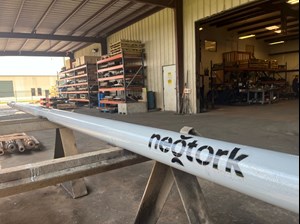
SPEED DRIVES TOMORROW’S DRILLING TODAY
All drilling causes some amount of near-bit vibration dysfunction downhole. Putting more weight on a bit, in order to drill faster, will usually increase these vibrations, increasing the chance of downhole BHA and drill bit failure, as well as reducing drilling efficiency and performance. Minimizing all four types of near-bit vibration dysfunctions can significantly improve downhole tool performance, as well as allow an increase in drilling parameters. When these parameters are increased, the ROP increase and operating cost savings can be significant.
Today’s operators are keenly focused on increasing drilling speeds—it’s a top priority. Given the industry’s constant cost pressures, eliminating vibrations downhole, so operators can drill faster than before, enableing them to achieve their operational goals without compromise.

- Automated iron roughneck and advanced robotics system enhance rig floor operations (September 2024)
- Decarbonizing drilling operations using more efficient electrical utility power (September 2024)
- Drilling advances and where they’re headed (July 2024)
- Drilling advances (May 2024)
- Digital’s influence on drilling and production keeps growing (March 2024)
- Taming the red zone with automation (April 2024)

